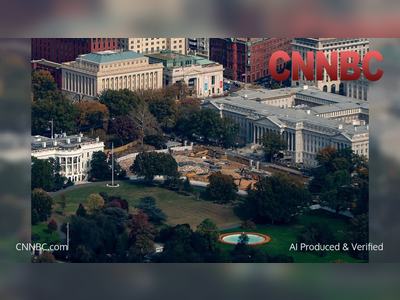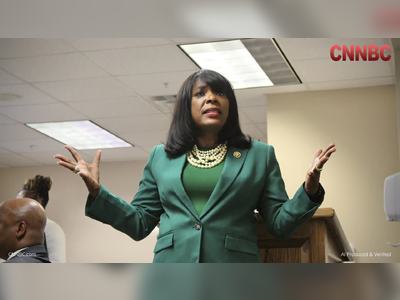John Oliver Skewers Trump’s White House East Wing Demolition as ‘Metaphor Too On the Nose’
Comedian John Oliver lambasts President Trump’s decision to raze the East Wing for a lavish $250 million ballroom in scathing opening segment
In a forceful opening segment of his show, John Oliver criticised President Donald Trump’s demolition of the White House East Wing and his plan to build a $250 million ballroom on the grounds.
The comedian described the teardown — for a structure billed as “Med Spa Versailles” — as “a metaphor that is, if anything, too on the nose.”
Oliver highlighted how the building’s destruction aligns with broader concerns about the administration’s conduct: from seeking $230 million from the United States Department of Justice for investigations into Trump’s own behaviour, to posting an artificial-intelligence video depicting the president dumping on protesters, to authorising military strikes at sea against suspected drug traffickers with limited transparency.
He suggested all of these actions paint a picture of executive power unchecked.
Turning back to the White House project, Oliver noted that although Trump had said the construction would “pay total respect to the existing building” and would not touch the main structure, demolition crews were observed dismantling the historic East Wing — built in 1902 and modernised in 1942 — in late October 2025. The planned 90,000-square-foot ballroom will reportedly accommodate up to 999 guests and be funded privately, though critics say federal review was bypassed and public transparency was lacking.
Oliver’s segment came in the same week that federal regulators and private citizens challenged the demolition: a Virginia couple filed for a court order to halt the project on the basis that required architectural reviews under federal law had not been completed.
Meanwhile, poll data indicated that 53 per cent of Americans oppose the demolition.
Oliver argued the demolition is emblematic of a broader erosion of checks and balances, noting that neither Congress nor the judiciary has acted decisively to restrain the action.
By framing the East Wing destruction alongside mounting allegations of presidential overreach — whether through bailouts, self-compensation schemes or extra-judicial violence — Oliver cast the ballroom project as more than an architectural remodelling.
For his audience, it served as a symbol of a presidency reshaping the White House and the office itself in its own image.
As the administration proceeds with demolition and construction, the conversation surrounding the White House project is likely to intensify — with implications for historic preservation, donor transparency, federal oversight and the future of presidential power.
The comedian described the teardown — for a structure billed as “Med Spa Versailles” — as “a metaphor that is, if anything, too on the nose.”
Oliver highlighted how the building’s destruction aligns with broader concerns about the administration’s conduct: from seeking $230 million from the United States Department of Justice for investigations into Trump’s own behaviour, to posting an artificial-intelligence video depicting the president dumping on protesters, to authorising military strikes at sea against suspected drug traffickers with limited transparency.
He suggested all of these actions paint a picture of executive power unchecked.
Turning back to the White House project, Oliver noted that although Trump had said the construction would “pay total respect to the existing building” and would not touch the main structure, demolition crews were observed dismantling the historic East Wing — built in 1902 and modernised in 1942 — in late October 2025. The planned 90,000-square-foot ballroom will reportedly accommodate up to 999 guests and be funded privately, though critics say federal review was bypassed and public transparency was lacking.
Oliver’s segment came in the same week that federal regulators and private citizens challenged the demolition: a Virginia couple filed for a court order to halt the project on the basis that required architectural reviews under federal law had not been completed.
Meanwhile, poll data indicated that 53 per cent of Americans oppose the demolition.
Oliver argued the demolition is emblematic of a broader erosion of checks and balances, noting that neither Congress nor the judiciary has acted decisively to restrain the action.
By framing the East Wing destruction alongside mounting allegations of presidential overreach — whether through bailouts, self-compensation schemes or extra-judicial violence — Oliver cast the ballroom project as more than an architectural remodelling.
For his audience, it served as a symbol of a presidency reshaping the White House and the office itself in its own image.
As the administration proceeds with demolition and construction, the conversation surrounding the White House project is likely to intensify — with implications for historic preservation, donor transparency, federal oversight and the future of presidential power.











